How ‘TikTok idiots’ and ‘wild’ conspiracy theories are disrupting police investigations | UK News
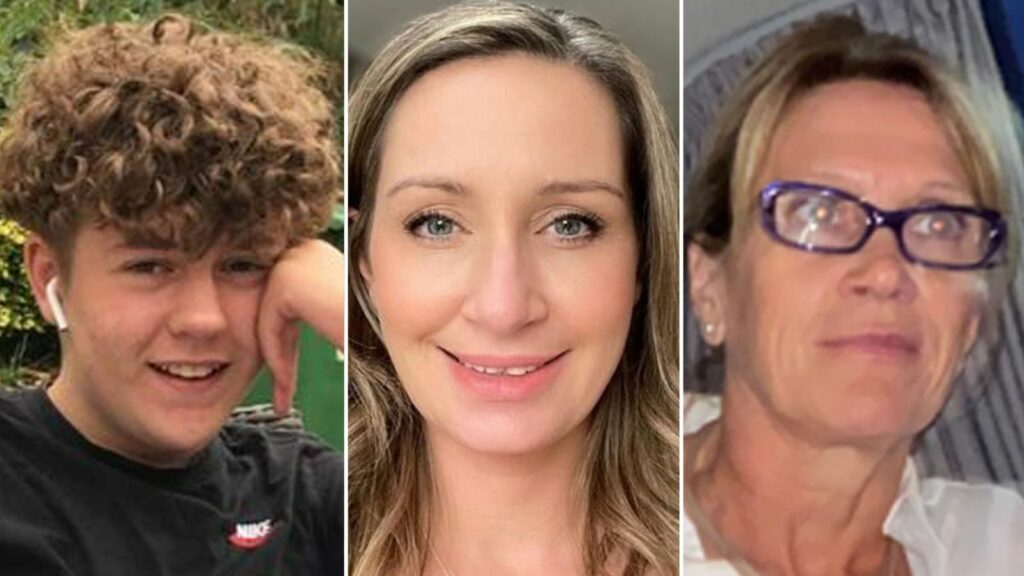
“So, do we have a serial killer in the UK pushing people or drowning people in rivers, canals, lakes, etc?” a TikToker cheerfully asks, in a video that has attracted more than 300,000 views.
She uses mainstream media reports of unconnected women found dead in the water across the country, Google maps, and studies published online to add credibility to the baseless theory on her account, which has more than 90,000 followers and more than two million likes.
People have always been interested in “solving a mystery”, says criminal psychologist Dr Amanda Vicary, but now people have access to tools they didn’t 30 years ago.
“The average person can search social media accounts and various online databases, pour through interviews and transcripts available online, and look through pictures and videos that are available related to various crimes – all from the comfort of one’s own home,” she tells Sky News.
But when mother-of-two Nicola Bulley, 45, went missing while walking her dog in St Michael’s on Wyre, the amateur detectives moved offline as they descended on the Lancashire village to carry out their own investigations at the scene.
During an intensive search and amid worldwide media attention in the weeks before the mortgage adviser’s body was found in the river, detectives said they were “inundated with false information, accusations and rumours” which were “distracting” them.
Nicola Bulley
Police issued a dispersal order to break up groups of “amateur sleuths” filming in the area, while YouTuber Dan Duffy was arrested and issued with a fixed penalty notice.
He had earlier posted clips to his 206,000 subscribers on YouTube saying he had “been in people’s back gardens at night-time”, while TikToker Curtis Arnold filmed police as they pulled Ms Bulley’s body from the river.
After a coroner concluded Ms Bulley died after accidentally falling into cold water, her family said in a statement: “We encourage people to look at the facts, the evidence which has been heard during the inquest, and the conclusion reached by the coroner, to ignore any amateur views and opinions, and be mindful of the impact words bring.”
‘TikTok idiots’
But the speculation continued online, where in a video addressing the criticism of “TikTok idiots” a year after her disappearance, the serial killer theorist says: “Personally, in my mind any attention to the case until full answers are given is positive.
“I work with missing people’s family all the time and I think you will find most of them fight to get any articles out there at all, anything in the public, that’s what they dream of is just someone taking them seriously.
“In this case, all the attention was fine until it wasn’t and then we were shamed quite terribly.”
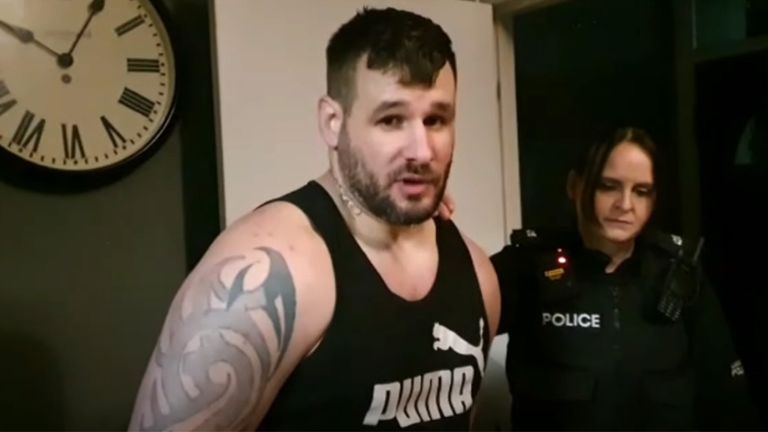
YouTuber Dan Duffy arrested
Lancashire Police also faced heavy criticism over their handling of the investigation and former Metropolitan Police detective chief inspector Simon Harding says the case shows the “damage that can be done” when officers allow too much access to the public.
He says lessons were learned by police searching for missing mother-of-three Gaynor Lord, 55, whose body was recovered from the River Wensum, a week after she disappeared in Norwich in December last year.
‘It will happen again’
As wild unsubstantiated theories and speculation again spread online, officers cordoned off the scene preventing a repeat of the interference of social media investigators, says Mr Harding.
“But it will happen again because true crime is so popular,” he tells Sky.
“Police have to look at their messaging and control crime scenes to stop this new phenomenon of armchair sleuths thinking they can solve a murder when 30-odd detectives can’t.”
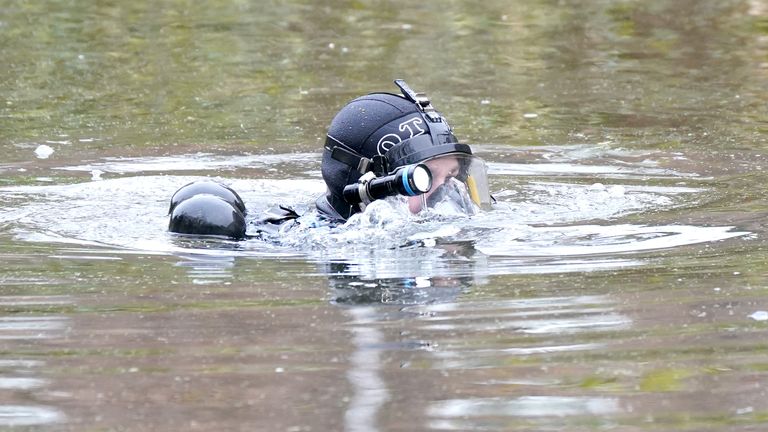
Police divers search for Gaynor Lord. Pic: PA
Detective Sergeant Ben Stephenson, of the Metropolitan Police, defended his colleagues from their amateur counterparts online during the hunt for wanted Clapham chemical attacker Abdul Ezedi.
“Hours upon hours of CCTV footage has been painstakingly reviewed and my colleagues involved deserve huge credit,” he wrote on X.
“There are some wild conspiracy theories being peddled. Best ignored.”
Police accused of lying
One well-known TikToker with hundreds of thousands of followers made a sceptical video outside Scotland Yard after police said Ezedi had gone into the River Thames, and continued to accuse police of “lying” even after his body was found and identified, in a clip with 1.7 million views.
TikTok’s policies don’t allow “inaccurate, misleading, or false content that may cause significant harm to individuals or society, regardless of intent” but it doesn’t cover information that is just inaccurate or myths.
Unlike in the search for Ms Bulley, officers had control of the Ezedi investigation, says Mr Harding, with CCTV coverage of both sides of Chelsea Bridge.
But he believes their messaging could have been “more brutal” to make clear they knew he jumped into the river and put an end to the speculation.

Police during their search of the Thames for Abdul Ezedi
While a senior investigating officer won’t be “thrown off the scent by someone having their own investigation”, he says, police do monitor social media and, in high-profile cases, the hundreds of thousands of messages can add to the workload.
Speculation can also create “unnecessary fear” in the local community, and police should be on the front foot to squash false rumours online, he says.
In the hours after 13-year-old Olly Stephens was stabbed to death in Reading on 3 January 2021, a claim that a girl had put a £154.94 bounty on his head was shared tens of thousands of times on social media.
‘Fake news’
The allegation was dismissed as “fake news” by police and some of the 200 Thames Valley Police officers working on the investigation had to contact bloggers and online commentators amid concern they might prejudice the case.
“We were really more concerned around the wider risk and repercussions, and people taking matters into their own hands, which clearly would have been, at best, very unwise, and, at the worst, against the law,” Detective Chief Inspector Andy Howard said after Olly’s killers were convicted.
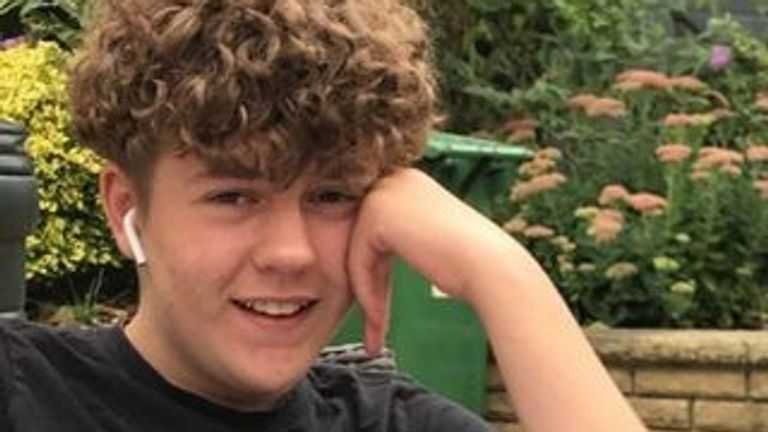
Olly Stephens, 13, was stabbed to death
Merseyside Police blamed “misinformation, speculation and rumours on social media” after seven men were jailed over a violent protest outside the Suites Hotel, which was housing asylum seekers in Knowsley, in February last year.
Crowds shouted “Get them out” as rocks and fireworks were thrown at police after a video was shared appearing to show an asylum seeker from the hotel asking a 15-year-old girl for her phone number and a kiss, a court heard.
‘Real world consequences’
In June last year, the same force said a 27-year-old man was assaulted by youths after false allegations, along with photographs, were posted on social media that he had tried to abduct a child and take pictures of the youngster outside a shop.
“For months, police and partners have warned that misinformation and speculation online have real-world consequences that put innocent people in harm’s way,” said Superintendent Karl Baldwin.
“Sadly, this case is an example of this danger. Online speculation, misinformation and sharing can actually damage the outcome of investigations and cause unnecessary fear and consequent behaviour.”
Please use Chrome browser for a more accessible video player
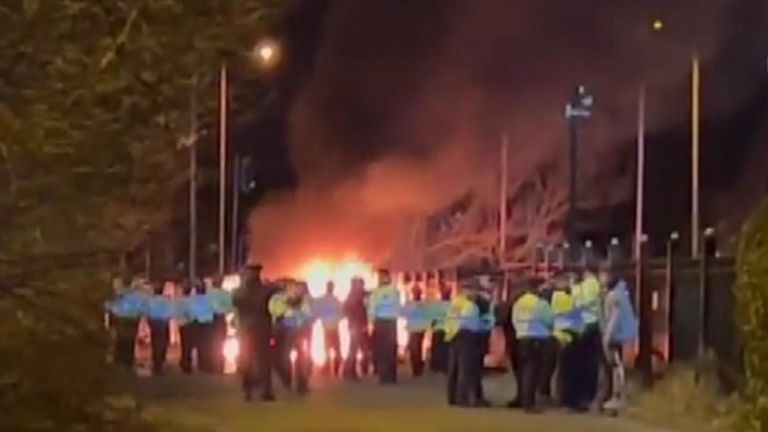
0:42
Violent protests in Merseyside

A burnt out police van after a protest outside the Suites Hotel. Pic: PA
People have been using social media to spread theories or speculate, particularly in missing persons cases, for some time, says social media expert Matt Navarra.
But anecdotally it seems to be on the rise, he says, as platforms such as TikTok, Reels and YouTube increasingly act as the main source of news for some demographics, particularly younger people.
“It’s about being part of the story rather than a passive consumer of news,” he tells Sky.
“Conspiracy theories and emotionally charged topics… undoubtedly spark the greatest reaction emotionally and draw the most attention.”
‘A hotbed of engagement’
Social media algorithms mean that if certain topics are particularly engaging, more of that content will be shown to users, while the popularity of posts incentivise creators to make more, he explains.

Keep up with all the latest news from the UK and around the world by following Sky News
Tap here
“Conspiracy theories, missing persons and crime are a hotbed of engagement because they tick all the boxes – mystery, a story, real-life, is there something else going on, what’s the conspiracy behind it? It’s like a drama in real life that they can be part of.”
While a single viral video which gets millions of views is unlikely to make more than a few hundred pounds for the creator, some are looking to grow audiences and build their own brands, which could make them more appealing to advertisers.
But it is “a human problem as much as an algorithm problem,” says Mr Navarro. “If people want it, people are going to create it.”
While some “clearly do it for followers”, says Dr Vicary, her research shows that people, especially women, “have a strong desire to understand how and why a crime occurred so that they can prevent the same thing from happening to them”.
“There’s certainly a dark side to these online investigations, with innocent people being doxxed and having their lives ruined, but there are also a lot of people just innocently theorising about a case online,” she says.
“By solving a case, people can get that answer – how did the victim get kidnapped? What red flags did they miss in their jealous partner or a stranger? If we know how it happened to someone else, we can keep it from happening to us.”






Recent Comments